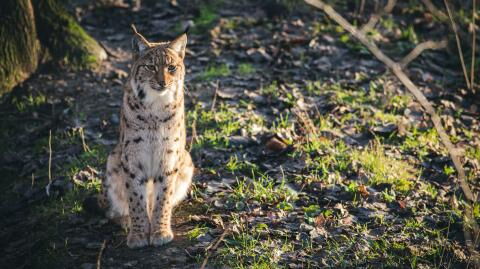The three-legged crow is a creature from Asian mythology. Present in various folklores under the name of 'sanzuwu' (China) or 'yatagarasu' (Japan), it is one of the symbols of the gods. Other three-limbed characters have certainly come out of the minds of science fiction authors. But they remain purely imaginary. Because in nature, no animal known to date has ever been born with a third leg.
Discover our latest podcast

Why not, asks Tracy Thomson, a graduate student in the Department of Earth and Planetary Sciences at the University of California, Davis (USA). In an essay, published in BioEssays in 2019 and entitled Three-legged locomotion and limb constraints, she examined the non-existence of 'tripeds,' as opposed to bipeds—such as humans—and quadrupeds.
A new phenotype
The idea came to her during a course on evolution. She was asked to come up with a 'novel phenotype,' i.e. an animal or plant that does not (and cannot) exist. The former student then observed that many animals use a third limb to relax. For example, meerkats rely on their tails to rest on their hind legs. Woodpeckers use their tail feathers to balance themselves on tree trunks.
But this third limb or 'tripod' does not require any energy for either meerkats or woodpeckers. On the contrary, standing requires muscular work and (relatively) large feet to maintain balance, Tracy Thomson pointed out. Therefore, true 'three-legged' movements are less common. However, they do exist.
Insects, with their six legs, move in groups of three: two legs on one side and one on the other. This is called 'tripod walking.' Monkeys also make special use of their tails, even though they have four limbs. Parrots use their beak as an additional handle. Kangaroos, on the other hand, handicapped by their very long legs, use their strong tails to swing their hobbit-like limbs from side to side when grazing.
Evolutionary symmetry
These different examples suggest that these physical limitations would not prevent a living thing from being functional. So why are there no three-legged animals? The answer lies far back on the evolutionary scale. 'Almost all animals are bilateral,' she introduced. This means that they have almost identical right and left sides. Therefore, limbs go in pairs.
This genetic code would have been written into our DNA very early on, 'perhaps even before appendages such as legs, flippers or shields evolved.' Once bilateral symmetry was acquired, it was difficult to go backward. Especially since it is optimal for running, an essential ability for predation or flight.
'This kind of thought experiment is useful for developing our ideas about evolution,' says Tracy Thomson.
If we try to understand [evolution] as a process, we have to understand what it can and can't do. Who knows, maybe tripods have evolved on other planets far away?
Read also:















